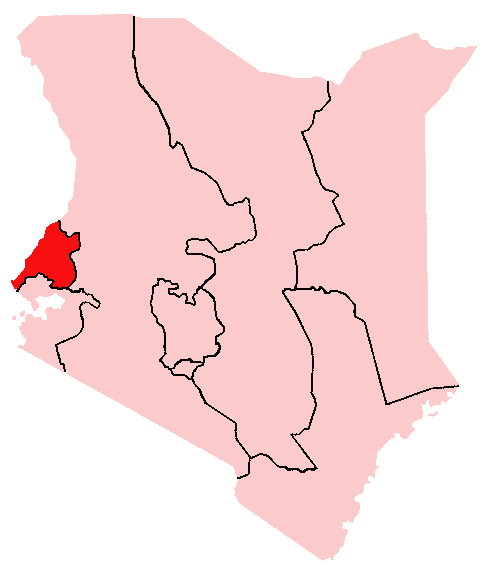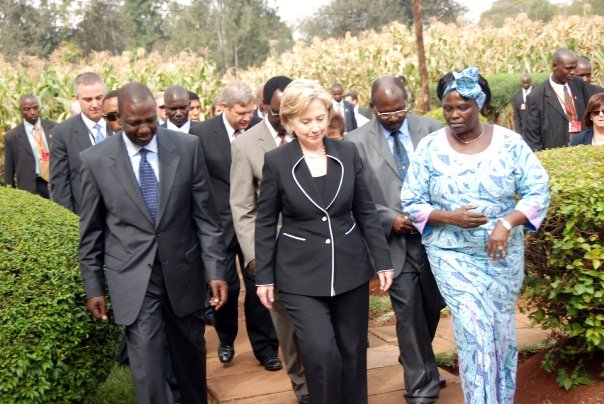|
Turbo, Eldoret
Turbo is a town in Uasin Gishu County, Kenya, approximately 34 kilometers northwest of Eldoret town (the capital of the county), along the Nairobi-Malaba Road. In 2009 it had a population of 35,000 people. People from the Kalenjin tribe are the most numerous inhabitants, although Tachoni, Luyha, Kikuyu and Somali also live in the town. Its main economic activity is agriculture. Popular places and landmarks in Turbo include Mchanganyiko Bar and Restaurant, Maseke Agro vet Kobil petrol station, Turbo Water Supply and the National Youth Service center. It is home to the Deputy President of Kenya, William Ruto William Kipchirchir Samoei Arap Ruto (born 21 December 1966) is a Kenyan politician who is serving as the fifth and current president of Kenya since 13 September 2022. Prior to becoming president, he served as the 11th deputy president of Ken .... References Populated places in Uasin Gishu County ... [...More Info...] [...Related Items...] OR: [Wikipedia] [Google] [Baidu] |
Uasin Gishu County
Uasin Gishu County is one of the 47 counties of Kenya, counties of Kenya located in the former Rift Valley Province. Eldoret has the county's largest population center as well as its administrative and commercial center. “It lies between longitudes 34 degrees 50’ east and 35 degrees 37’ West and latitudes 0 degrees 03’ South and 0 degrees 55’ North. It is a highland plateau with altitudes falling gently from 2,700 meters above sea level to about 1,500 meters above sea level. The topography is higher to the east and declines gently towards the western border”. Uasin Gishu is located on a plateau and has a cool and temperate climate. The county borders Trans-Nzoia County to the north, Elgeyo-Marakwet County, Elgeyo-Marakwet and Baringo County, Baringo counties to the east, Kericho County, Kericho county to the south, Nandi County, Nandi county to the south, south-west and Kakamega county to the west. Etymology The county's name comes from the Maasai word Illwuasin-kis ... [...More Info...] [...Related Items...] OR: [Wikipedia] [Google] [Baidu] |
Kenya
) , national_anthem = "Ee Mungu Nguvu Yetu"() , image_map = , map_caption = , image_map2 = , capital = Nairobi , coordinates = , largest_city = Nairobi , official_languages = Constitution (2009) Art. 7 ational, official and other languages"(1) The national language of the Republic is Swahili. (2) The official languages of the Republic are Swahili and English. (3) The State shall–-–- (a) promote and protect the diversity of language of the people of Kenya; and (b) promote the development and use of indigenous languages, Kenyan Sign language, Braille and other communication formats and technologies accessible to persons with disabilities." , languages_type = National language , languages = Swahili , ethnic_groups = , ethnic_groups_year = 2019 census , religion = , religion_year = 2019 census , demonym = ... [...More Info...] [...Related Items...] OR: [Wikipedia] [Google] [Baidu] |
Eldoret
Eldoret is a principal town in the Rift Valley region of Kenya and serves as the capital of Uasin Gishu County. The town was referred to by white settlers as Farm 64, 64 and colloquially by locals as 'Sisibo'. As per the 2019 Kenya Population and Housing Census, Eldoret is the fifth most populated urban area in the country after Kenya's 4 cities of Nairobi, Mombasa, Kisumu and Nakuru. Lying south of the Cherangani Hills, the local elevation varies from about at the airport to more than in nearby areas. The population was 289,380 in the 2009 Census, and it is currently the fastest growing town in Kenya with 475,716 people according to 2019 National Census. Eldoret was on course to be named Kenya's fourth city, but was edged out by Nakuru in 2021. Etymology The name "Eldoret" is based on the Maasai word "eldore" meaning "stony river"; a reference to the bed of the Sosiani River (a tributary of the Nile), that runs through the city. History Eldoret and the plateau around it h ... [...More Info...] [...Related Items...] OR: [Wikipedia] [Google] [Baidu] |
Nairobi–Malaba Road
The Nairobi–Malaba Road, also Nairobi–Uganda Road or A104 Road (Kenya) is a major highway in Kenya, the largest economy in the East African Community. The road connects Nairobi, the capital and largest city in Kenya, with the border town of Malaba at the international border with Uganda. Location The road starts in the city of Nairobi and takes a general north-westerly direction through Naivasha, Nakuru, Eldoret and Bungoma, to end at Malaba, a distance of approximately The coordinates of this road in the city of Eldoret, Uasin Gishu County are: 0°30'23.0"N, 35°17'57.0"E (Latitude:0.506389; Longitude:35.299167). Overview This road, together with the Nairobi–Mombasa Road, are part of ''The Great North Road'', which connects the landlocked countries of Burundi, Eastern DR Congo, Rwanda, Uganda and South Sudan to the Kenyan coast at Mombasa, on the Indian Ocean. Due to the volume of traffic, and the concentration of heavy-duty transport vehicles, the route is accid ... [...More Info...] [...Related Items...] OR: [Wikipedia] [Google] [Baidu] |
Kalenjin People
The Kalenjin are a group of tribes designated as Highland Nilotes and are descended from Maliri people ''(thus related to Daasanach of Ethiopia.)'' The Kalenjin are cousins with Datooga people of Tanzania and Malawi. In contrast, their designation groups them with other Nilotes including Maasai, Luo, Turkana and Nuer, Dinka among others. They are indigenous to East Africa, residing mainly in what was formerly the Rift Valley Province in Kenya and Eastern slopes of Mount Elgon in Uganda. Upon their arrival in the forest region of Mau, the Kalenjin assimilated the aboriginal hunter-gatherer people known as Okiek. They number 6,358,113 individuals as per the Kenyan 2019 census and an estimated 300,000 in Uganda mainly in Kapchorwa, Kween and Bukwo districts. They have been divided into 11 culturally and linguistically related tribes: Kipsigis (1.9 million), Nandi (937,000), Sebei (350, 000) Keiyo (251, 000), Marakwet (119, 000), Sabaot (296,000), Pokots (778, 000), Tuge ... [...More Info...] [...Related Items...] OR: [Wikipedia] [Google] [Baidu] |
Tachoni
The Tachoni (meaning "We shall be back") are Kalenjin who were assimilated by the Luhya people of western Kenya, sharing the land with the Bukusu tribe. They live mainly in Webuye, Chetambe Hills, Ndivisi (of Bungoma County) Matete sub-county and Lugari sub-county in Kakamega County. Most Tachoni clans living in Bungoma speak the ' Olutachoni dialect of the Luhya language, and they are subsequently often mistaken as Bukusus. They spread to Trans-Nzoia County especially around Kitale, and to Uasin Gishu County near Turbo, Eldoret. Among the Tachoni clans are Abakobolo, Abamuongo, Abamarakalu, Abangachi, Abasang'alo, Abasamo, Abayumbu (mostly around Webuye), Abamuchembi, Abachambai, Abacharia, Abakabini, Abamakhuli, Abasioya, Abaabichu, Abamachina, Abamutama, Abakafusi, Abasonge, Abasaniaka, Abaabiya, Abakubwayi, Abamweya, Abachimuluku. Note that the morpheme 'aba' means 'people'. The Abakhusia/abasamo of Kabras are also Tachonis who speak Kikabras. Circumcision The tribe is r ... [...More Info...] [...Related Items...] OR: [Wikipedia] [Google] [Baidu] |
Luhya People
The Luhya (also known as ''Abaluyia'' or Luyia) comprise a number of Bantu ethnic groups native to western Kenya. They are divided into 20 culturally and linguistically related tribes. ''Luhya'' refers to both the 20 Luhya clans and their respective languages collectively called Luhya languages. There are 20 (and by other accounts, 21, when the Suba are included) clans that make up the Luhya. Each has a distinct dialect best on thelocality of the speakers.The different dialects shows maturity of the luhya language. The Luhya language can only be equated to the Baganda,Soga and Lugisu language in Uganda. The Luhya culture is similary to Great lakes region Bantu speakers that stretches all the way from their anceral land in DRC. The word ''Luhya'' or ''Luyia'' in some of the dialects means "the north", and ''Abaluhya (Abaluyia)'' thus means "people from the north". Other translations are "those of the same hearth." The seventeen sub-tribes are the Bukusu (''Aba-Bukusu''), Idakho ... [...More Info...] [...Related Items...] OR: [Wikipedia] [Google] [Baidu] |
Kikuyu People
The Kikuyu (also ''Agĩkũyũ/Gĩkũyũ'') are a Bantu ethnic group native to Central Kenya. At a population of 8,148,668 as of 2019, they account for 17.13% of the total population of Kenya, making them Kenya's largest ethnic group. The term ''Kikuyu'' is derived from the Swahili form of the word Gĩkũyũ. is derived from the word mũkũyũ which means sycamore fig (''mũkũyũ'') tree". Hence ''Agĩkũyũ'' in the Kikuyu language translates to "Children Of The Big Sycamore". The alternative name ''Nyũmba ya Mũmbi'', which encompasses ''Embu'', ''Gikuyu'', and ''Meru'', translates to "House of the Potter" (or "Creator"). History Origin The Kikuyu belong to the Northeastern Bantu branch. Their language is most closely related to that of the Embu and Mbeere. Geographically, they are concentrated in the vicinity of Mount Kenya. The exact place that the Northeast Bantu speakers migrated from after the initial Bantu expansion is uncertain. Some authorities sugge ... [...More Info...] [...Related Items...] OR: [Wikipedia] [Google] [Baidu] |
Somalis
The Somalis ( so, Soomaalida 𐒈𐒝𐒑𐒛𐒐𐒘𐒆𐒖, ar, صوماليون) are an ethnic group native to the Horn of Africa who share a common ancestry, culture and history. The Lowland East Cushitic Somali language is the shared mother tongue of ethnic Somalis, which is part of the Cushitic branch of the Afroasiatic language family, and are predominantly Sunni Muslim.Mohamed Diriye Abdullahi, ''Culture and Customs of Somalia'', (Greenwood Press: 2001), p.1 They form one of the largest ethnic groups on the African continent, and cover one of the most expansive landmasses by a single ethnic group in Africa. According to most scholars, the ancient Land of Punt and its native inhabitants formed part of the ethnogenesis of the Somali people. An ancient historical kingdom where a great portion of their cultural traditions and ancestry has been said to derive from.Egypt: 3000 Years of Civilization Brought to Life By Christine El MahdyAncient perspectives on Egypt By R ... [...More Info...] [...Related Items...] OR: [Wikipedia] [Google] [Baidu] |
William Ruto
William Kipchirchir Samoei Arap Ruto (born 21 December 1966) is a Kenyan politician who is serving as the fifth and current president of Kenya since 13 September 2022. Prior to becoming president, he served as the 11th deputy president of Kenya from 2013 to 2022. He previously served in several cabinet positions such as the Minister for Home Affairs, the Minister of Agriculture and as Minister for Higher Education. Ruto was elected Member of Parliament for Eldoret North constituency from 1997 to 2007, under the KANU and 2007 to 2013 through ODM party. He was the Minister for Home Affairs in the Daniel arap Moi administration from August to December 2002. Under the Mwai Kibaki administration, he was the Minister for Agriculture from 2008 to 2010 and Minister for Higher Education from April to October 2010. Ruto ran for the deputy presidency in the 2013 election under the United Republican Party, becoming the running mate of Uhuru Kenyatta from The National Alliance ... [...More Info...] [...Related Items...] OR: [Wikipedia] [Google] [Baidu] |





.jpg)
